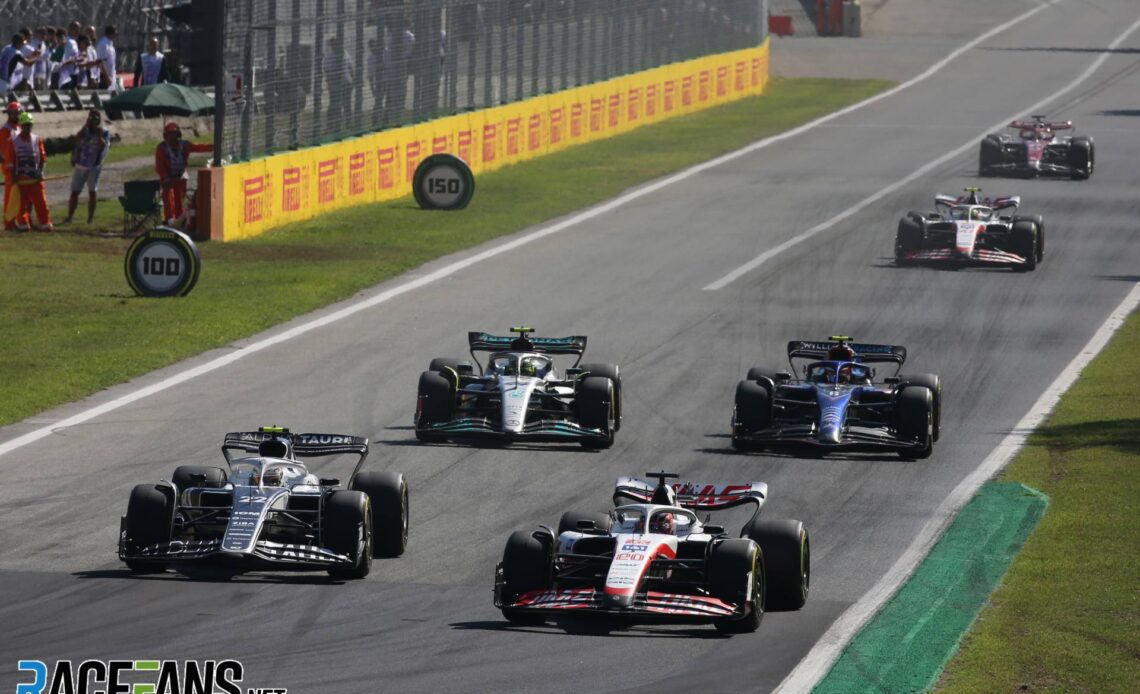The major technical regulations overhaul introduced to Formula 1 for the 2022 season was arguably the biggest the sport has ever seen in a single season.
Above all else, the purpose of the radical regulations changes was to transform the level of wheel-to-wheel racing for fans to enjoy during races by drastically reducing the impact of ‘dirty air’ due to how aerodynamically sensitive previous cars were.
For many years, Formula 1 drivers struggled to get close enough to their rivals to attempt overtakes due to how much downforce they lost close behind other cars. Back in 2011, F1 and the FIA introduced the new Drag Reduction System, designed to try and increase overtaking opportunities by allowing drivers to open up a flap in their rear wings and gain additional speed over the cars ahead – but only in specific zones on the circuit when within a second of the car ahead.
Over the 12 seasons in which DRS has been a part of Formula 1, it has had no shortage of critics. Many consider the system inherently unfair, giving a chasing driver an arbitrary advantage over their rival ahead that they cannot use in defence. With the additional speed afforded by DRS, many overtaking moves made with the device are considered too easy, akin to a car passing another on a motorway, robbing the element of skill from pulling off a successful pass.
With the introduction of F1’s second ground effect era, many DRS critics hopes that the new cars would render the overtaking aid obsolete, an unneeded gimmick as drivers would have more opportunities to pass on track without assistance. Before the start of the season, F1 teams had discussed the option of getting rid of DRS should the new cars prove successful. But there are no signs from the FIA, from Formula 1 or the ten teams that there are plans to phase out the controversial system.
But is it time for the sport to consider disposing of DRS?
For
An essential part of F1’s appeal is that its 20 grand prix drivers, in theory, possess the most elite driving skills of any single-seater drivers on the planet. Not just in their ability to drive the quickest racing cars in the world at speeds no others could match, but in their race craft and ability to race side-by-side with their opponents for every position.
Of all the most iconic overtaking moves in F1 history, hardly any involved a DRS zone, be it Nigel Mansell sweeping past Gerhard Berger at Peraltada in Mexico, Fernando Alonso forcing Michael Schumacher to back out at over…
Click Here to Read the Full Original Article at RaceFans…

